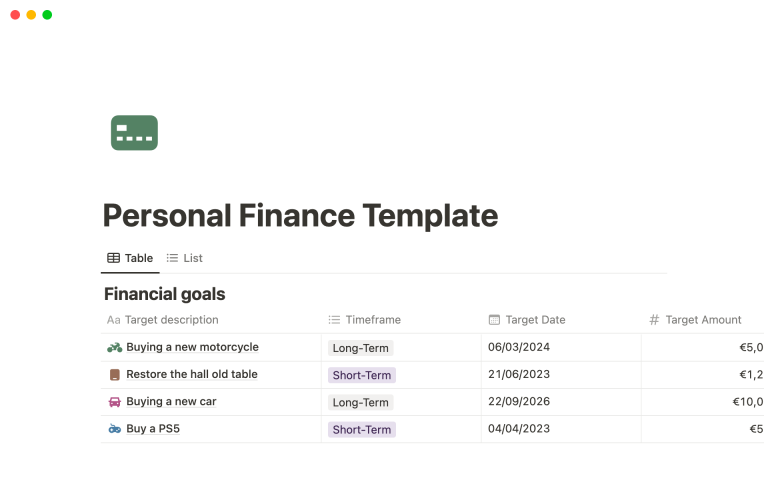Managing a small business can feel like juggling a hundred different tasks at once. From tracking expenses to forecasting cash flow, the workload can be overwhelming. That’s why using the right tools, like small business finance templates, can make all the difference. They not only simplify your workflow but also help you keep your finances in order, allowing you to focus on what truly matters: growing your business.
Essential Small Business Finance Templates
When it comes to managing the financial side of your small business, having effective templates at your disposal is crucial. These templates are designed to be user-friendly and can be easily customized to fit your business’s specific needs. In this article, we will explore various types of small business finance templates that can help streamline your operations and boost your productivity.
Why Use Small Business Finance Templates?
Using small business finance templates has a plethora of benefits. First and foremost, they save you time. Instead of starting from scratch, you can use pre-designed templates that already have the basic structure in place. This allows you to quickly plug in your information and get to work. Furthermore, finance templates can help you maintain organization, which is essential when managing your finances.
Types of Small Business Finance Templates You Need
There are several key templates that every small business owner should have in their toolkit. Below are some indispensable small business finance templates that you should consider implementing:
1. Budgeting Templates
Budgeting is the backbone of financial management. Without a solid budget in place, it’s easy to overspend and lose track of your financial goals. A budgeting template can help you allocate resources effectively and track where your money is going.
2. Invoice Templates
Invoices are a necessary component of small business finance. They help you bill clients accurately and ensure timely payments. An invoice template streamlines this process, allowing you to generate professional-looking invoices in a fraction of the time it would take to design one from scratch.
3. Expense Tracking Templates
Keeping track of your expenditures is crucial for understanding your cash flow. An expense tracking template helps you record all your spending, categorize expenses, and analyze your financial habits. This information can be vital for identifying areas where you may need to cut back.
4. Profit and Loss Statements
A profit and loss statement (P&L) is essential for assessing the overall health of your business. This template allows you to summarize your income and expenses over a specific period, helping you see whether you’re making a profit or incurring losses. Regularly reviewing your P&L statements can provide insights into your financial performance and guide future business decisions.
5. Cash Flow Statements
Understanding your cash flow is imperative to keep your business running smoothly. A cash flow statement template helps you monitor how cash moves in and out of your business. This is especially important during slow periods or when planning for future expenses. With a clear picture of your cash flow, you can make more informed financial decisions.
6. Financial Forecasting Templates
Forecasting is all about planning for the future. A financial forecasting template aids you in estimating your revenues and expenses for the months to come. It helps you stay one step ahead and be prepared for potential challenges. By using this template, you can be proactive rather than reactive when it comes to your finances.
Visual Guide to Small Business Finance Templates
Check Out This Helpful Illustration

This illustration provides a visual overview of how small business finance templates can enhance your workflow. Using visual tools like this can help you conceptualize how all the pieces fit together in your financial management strategy.
How to Create Your Own Small Business Finance Templates
While there are plenty of ready-made templates available online, you might find that customizing your own templates better suits your specific needs. Here’s a simple process to follow:
- Identify your needs: Determine which aspects of financial management require templates (e.g., budget, invoicing, etc.).
- Choose software: Utilize spreadsheet software like Microsoft Excel or Google Sheets where templates can be created easily.
- Create your layout: Design the structure of your template ensuring it is user-friendly and intuitive.
- Include relevant formulas: For budgeting and financial forecasting templates, include formulas that automatically calculate totals and net amounts.
- Test and revise: Run through your new template with sample data to identify any adjustments needed for efficiency.
Where to Find Quality Templates
If crafting your own templates feels overwhelming, don’t worry! There are numerous online resources where you can find high-quality, customizable small business finance templates. Websites like Google Docs, Microsoft Office, and dedicated business resources often offer free or affordable templates that can suit your needs.
Conclusion: Take Control of Your Finances
In today’s fast-paced business environment, managing your finances effectively is a must for any small business owner. Leveraging small business finance templates can alleviate some burdens, allowing you to stay organized and focused on growth. By incorporating these templates into your workflow, you’ll be on your way to better financial health and business success.
Remember, every small step you take in managing your finances can lead to significant improvements down the line. So why not take the plunge? Your business deserves it!


